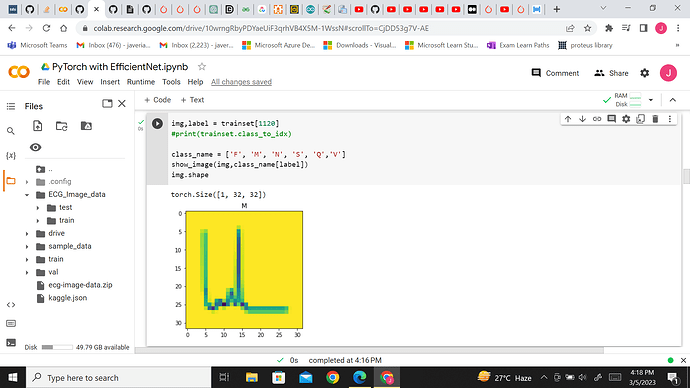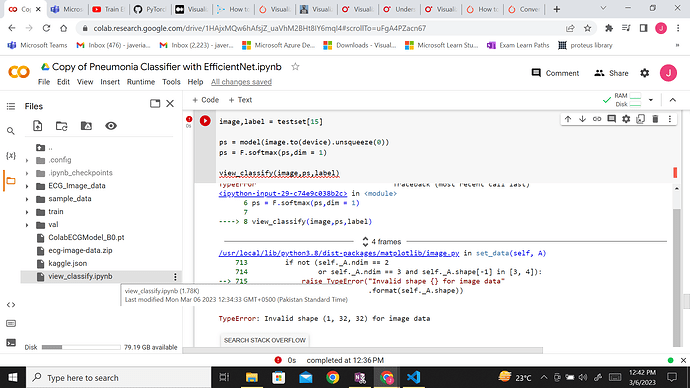Hello. I have 3 folders with images subfolders as train, test and validate. I have used T.Grayscale(1) to convert into grayscale but when I show the image , its like this. I dont understand why? Here is the image which Im getting
my code is here:
import matplotlib.pyplot as plt
import torch.nn.functional as F
import torch
import numpy as np
def show_image(image,label):
image = image.permute(1,2,0)
plt.imshow(image)
plt.title(label)
def show_grid(image,title = None):
image = image.permute(1,2,0)
plt.figure(figsize=[15, 15])
plt.imshow(image)
if title != None:
plt.title(title)
def accuracy(y_pred,y_true):
y_pred = F.softmax(y_pred,dim = 1)
top_p,top_class = y_pred.topk(1,dim = 1)
equals = top_class == y_true.view(*top_class.shape)
return torch.mean(equals.type(torch.FloatTensor))
def view_classify(image,ps,label):
class_name = ['F', 'M' ,'N', 'S', 'Q','V']
classes = np.array(class_name)
ps = ps.cpu().data.numpy().squeeze()
image = image.permute(1,2,0)
fig, (ax1, ax2) = plt.subplots(figsize=(8,12), ncols=2)
ax1.imshow(img)
ax1.set_title('Ground Truth : {}'.format(class_name[label]))
ax1.axis('off')
ax2.barh(classes, ps)
ax2.set_aspect(0.1)
ax2.set_yticks(classes)
ax2.set_yticklabels(classes)
ax2.set_title('Predicted Class')
ax2.set_xlim(0, 1.1)
plt.tight_layout()
return None
train_transform = T.Compose([
T.Resize(size=(CFG.img_size,CFG.img_size)),
T.ToTensor(),
T.Grayscale(num_output_channels=1)
])
validate_transform = T.Compose([
T.Resize(size=(CFG.img_size,CFG.img_size)),
T.ToTensor(),
T.Grayscale(num_output_channels=1)
])
test_transform = T.Compose([
T.Resize(size=(CFG.img_size,CFG.img_size)), # Resizing the image to be 32 by 22
T.ToTensor(),
T.Grayscale(num_output_channels=1)
])


